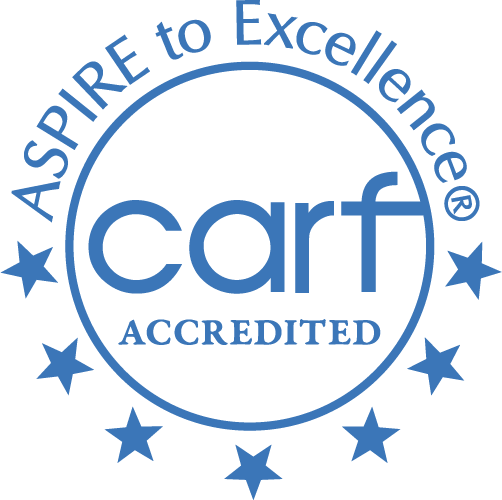
9090 South Rodgers Court SE
Caledonia, MI. 49316
616-891-8770
Caledonia, MI has nearby choices for addiction treatment including: 2 medicare treatment centers, 2 inpatient drug rehabs, 3 drug rehabs that take private insurance like Cigna, 1 drug detox, 3 outpatient rehabs.

For help finding an addiction treatment center, Call us!
All calls are 100% confidential and free
1-877-882-9275



Cherry Street Health Services is 8.9 miles from Caledonia, Michigan


Grand Recovery is 11.2 miles from Caledonia, Michigan
Grand Recovery is an alcohol and drug rehab program for people residing in the Caledonia, Michigan area and battling an alcohol and drug use issue and co-occurring mental health disorder. It provides services like group therapy, dialectical behavior therapy, trauma therapy, individual psychotherapy, substance abuse counseling approach, couple/family therapy and more, that are in keeping with its philosophy of the treatments that have been proved to work.
Grand Recovery believes in individualized care to make sure that their clients achieve the best possible results. The alcohol and drug treatment program has also specialized in other types of care like seniors or older adults, treatment for spanish-speaking clients, persons with serious mental illness, housing services, substance abuse education, clients referred from the court/judicial system - among many others. All these services are also provided by Grand Recovery in a variety of settings like outpatient detox centers, outpatient individual counseling, short term rehab facilities, long term treatment facilities, inpatient drug addiction treatment, as well as others.
Further, it has aftercare programs created to help you find permanent sobriety. These programs have made sure that Grand Recovery has a special place within the local community, especially because they lead to positive long term outcomes for the clients who enroll into this alcohol and drug rehab center. Last but not least, Grand Recovery accepts private health insurance, private pay, medicaid, medicare, sliding fee scale, state corrections or juvenile justice funds, access to recovery (atr) voucher and others.



Sanford House at Cherry Street is 11.8 miles from Caledonia, MI
Sanford House at Cherry Street is an addiction treatment program for people residing in Caledonia, MI. and within the surrounding neighborhoods and struggling with an alcohol and drug abuse issue and co-occurring mental health disorder. As such, it provides services like group therapy, dialectical behavior therapy, trauma therapy, individual psychotherapy, substance abuse counseling approach, couple/family therapy and more, that are in line with its philosophy of evidence based treatments that are proven effective.
In the same way, Sanford House at Cherry Street believes in individual treatment to make sure that their patients achieve the best possible results. The alcohol and drug treatment program has also specialized in other treatments like seniors or older adults, treatment for spanish-speaking clients, persons with serious mental illness, housing services, substance abuse education, clients referred from the court/judicial system - among many others. All these services are also provided by Sanford House at Cherry Street in various settings like outpatient detoxification facilities, intensive outpatient treatment, short term treatment centers, long term drug and alcohol rehab programs, inpatient drug and alcohol rehab centers, as well as others.
Further, it has aftercare plans designed to help you find permanent sobriety. These services have made sure that Sanford House at Cherry Street has a special place within Caledonia, Michigan and its surrounding area, especially because they promote both positive short and long term outcomes for the people who enroll into this addiction treatment facility. Last but not least, Sanford House at Cherry Street accepts private insurance, cash or self-payment, medicare, medicaid, sliding fee scale, state corrections or juvenile justice funds, access to recovery (atr) voucher and others.
Pain relief: Fentanyl's primary medical use is for pain relief, as it binds to opioid receptors in the brain and spinal cord to reduce the perception of pain and increase pain tolerance.
Euphoria: Like other opioids, fentanyl can produce feelings of euphoria by increasing the release of neurotransmitters such as dopamine in the brain, which can contribute to its potential for abuse and addiction.
Sedation: Fentanyl can cause drowsiness, sedation, and a general feeling of relaxation. In medical settings, this effect is often desirable, but it can be dangerous if the drug is taken recreationally or without proper supervision.
Respiratory depression: One of the most severe side effects of fentanyl is respiratory depression, which is a slowing of the breathing rate. This can lead to a lack of oxygen, resulting in brain damage, coma, or death, especially if taken in high doses or combined with other substances that suppress breathing.
Nausea and vomiting: Fentanyl can cause gastrointestinal side effects, such as nausea and vomiting, which are common among opioid users.
Constipation: Opioids like fentanyl can slow down the movement of food through the digestive tract, resulting in constipation.
Itching: Fentanyl and other opioids can cause histamine release, leading to itching or skin irritation in some users.
Dependence and addiction: Due to its potency, fentanyl has a high potential for dependence and addiction. Prolonged use can lead to physical dependence, withdrawal symptoms, and psychological addiction, making it challenging to stop using the drug.
Overdose: Fentanyl's potency increases the risk of overdose, which can be life-threatening. Symptoms of fentanyl overdose include extreme drowsiness, difficulty breathing, slow heart rate, low blood pressure, and unconsciousness. Naloxone, an opioid antagonist, can be administered to reverse the effects of a fentanyl overdose, but multiple doses may be required due to fentanyl's potency.
The duration of drug withdrawal symptoms can vary widely depending on several factors, including the type of substance used, the duration of use, the degree of dependence, individual metabolism and health status, and whether one quits cold turkey or with medical assistance.
Generally, withdrawal symptoms can be divided into acute and post-acute phases:
Acute Withdrawal: This is the initial phase of withdrawal, where physical symptoms are typically the most severe. Depending on the substance, acute withdrawal symptoms can begin within a few hours to a few days after the last use and can last anywhere from a few days to a few weeks. For example, alcohol withdrawal symptoms often start within 8 hours of the last drink and can last up to a few days or weeks, while opioid withdrawal symptoms usually start within 12-30 hours of the last dose and can last approximately a week.
Post-Acute Withdrawal Syndrome (PAWS): Some individuals may experience a second phase of withdrawal known as Post-Acute Withdrawal Syndrome. PAWS refers to a group of symptoms that occur after the acute withdrawal phase, predominantly psychological, such as anxiety, irritability, mood swings, depression, and sleep disturbances. PAWS can last from a few weeks to a year or more after the cessation of substance use.
It's important to remember that withdrawal can be dangerous and even life-threatening in some cases, especially when it comes to substances like alcohol and benzodiazepines. Therefore, withdrawal should always be done under medical supervision. The support and treatment offered by medical professionals during detoxification can also help to mitigate withdrawal symptoms and make the process safer and more comfortable.
In the mental health field, drug addiction is commonly referred to as a "Substance Use Disorder" (SUD). This term is used in the Diagnostic and Statistical Manual of Mental Disorders, Fifth Edition (DSM-5), which is the standard classification of mental disorders used by mental health professionals in the United States.
A Substance Use Disorder is defined as a pattern of behaviors characterized by an inability to control or cut down on use, spending a lot of time obtaining the substance, craving the substance, failing to fulfill obligations at work, school, or home due to substance use, and continuing to use the substance despite knowing it's causing physical or psychological harm.
Substance Use Disorders can be further categorized based on the specific substance involved, such as Alcohol Use Disorder, Opioid Use Disorder, Cannabis Use Disorder, and so forth. The severity of the disorder is also assessed (mild, moderate, or severe) based on the number of diagnostic criteria met by an individual.
It's worth noting that this terminology emphasizes the understanding of drug addiction as a medical disorder, rather than a moral failing or a matter of willpower. This shift in language is part of a larger effort to reduce stigma and promote a more compassionate, effective approach to treatment.
National Non Profit Helpline - 1-877-882-9275
Our National Non Profit Helpline is a 24/7, 365-day-a-year treatment referral and information service for individuals and families faced with mental and/or substance use disorders.
All calls are strictly confidential
Our service provides referrals to licensed treatment facilities, support groups, and community-based organizations. You don't have to struggle alone with addiction. Help is just a phone call away. Call 1-877-882-9275 now to get the help you need and deserve.
© Copyright 1998 - 2022 All Rights Reserved. Content is protected under copyright laws, do not use content without written permission.